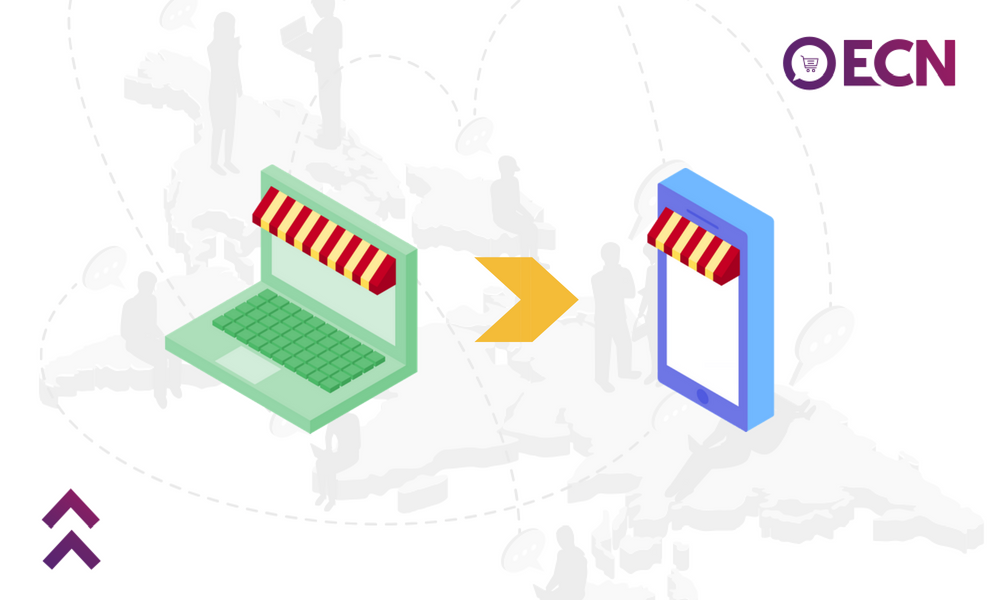As mobile traffic has overtaken desktop traffic already, you should be ready to adapt your e-shop to mobile phones as well. So, there is no surprise that a significant shift from shopping from a desktop to shopping using a mobile was one of the most prevalent trends in 2018.
As always, here the customers dictate the rules. In this ever-changing modern world, the customers want fast and efficient shopping experience. The statistics show the same: around 60% of the smartphone users have made a purchase using a mobile app in 2018.
Reasons behind the trend
There could be numerous reasons why shoppers tend to turn to their mobile phones to go online shopping. One of the reasons why mobile shopping is experiencing such a rise is the improvement of the technologies such as fingerprint and facial recognition technologies which provide extra security. In addition, such payment options as one-click payments fasten the whole process and make it incredibly easy. There’s no denying that nowadays shoppers get impatient and frustrated very quickly, so shopping in a waiting-free environment seems like a very appealing solution. Most importantly, people always have their mobile phones on the go, so they can shop whenever and wherever they feel like it.
The influence of social media
Ecommerce shift to the mobile phones was also majorly influenced by such social media platforms as Instagram and Pinterest. Social media marketing is taking over these apps, with products and services being promoted in every other post. In fact, it is so powerful there that Instagram now decided to implement payments within the app to avoid redirecting the user to another website.
So, as mobile purchasing continues to grow, merchants have to adapt their online shops to mobile users, preferably by creating an app.
The best way to adapt your Ecommerce for mobile phones
There are a few ways to modify your website to the mobile screen, yet the most advisable is developing an app. Firstly, it has been proven by the statistics that 78% of mobile users in the US prefer using a mobile app instead of a mobile site. Also, shopping carts in the mobile apps are abandoned the least – only 1 out 5 times.
Benefits of a mobile app
Developing an app for an Ecommerce could also be seen as a way to retain loyal customers. For instance, a merchant could try app personalization, i.e. include a ‘suggested’ section based on the previous purchases. Another useful feature of mobile apps is push notifications which enable a merchant to alert his customers about upcoming sales, special offers and provide other useful information. Exclusive offers for the app users are also recommendable. It could be special prices, exclusive goods, etc.
Such preference is impacted by a variety of factors, for example, while using an app, a customer doesn’t have to remember the URL of the website, apps usually work faster in comparison to the mobile sites and generally are safer.
A brilliant example
The field which excelled in using apps to offer their services is the field of transportation, taxi services in particular. Nobody calls a taxi or stands on a street with a raised hand anymore and it is all because you can order a taxi with one simple click.
How to adapt your Ecommerce to mobile phones
Adapting a website for mobile covers more than just the design of a website – various customer support options as well as different payment options should also be considered. The design of an e-shop should serve the needs of a customer – it should be as easy to navigate as possible. Also, including contact details is highly recommendable. Customer support helps build customers’ trust and form long-lasting relationships, therefore a merchant should consider providing customer support via different channels in several languages.
Offering a variety of payment options is extremely beneficial for the overall revenue – if a buyer has a choice to pay using his/her preferred payment option (e.g. with a credit or debit card), he/she is more likely to make a purchase. Implementing such payment solutions as one-click and recurring payments has benefits for both the merchants and the customers. When choosing a credit and debit card payment processing provider, be sure to double-check if they suggest such services. It increases the revenue and is a stable source of income for the merchant and it simplifies the whole shopping process for the buyer.
Since new trends in Ecommerce continue to appear, merchants have to be ready to adapt themselves and their shops, according to the trends and the needs of the customers. It is rather difficult following every trend, yet this one is really worthy of attention as it has proven benefits for both – the merchants and the buyers.
Don’t hesitate to let us know what you think about this subject in the comments, on Twitter or on Facebook!





